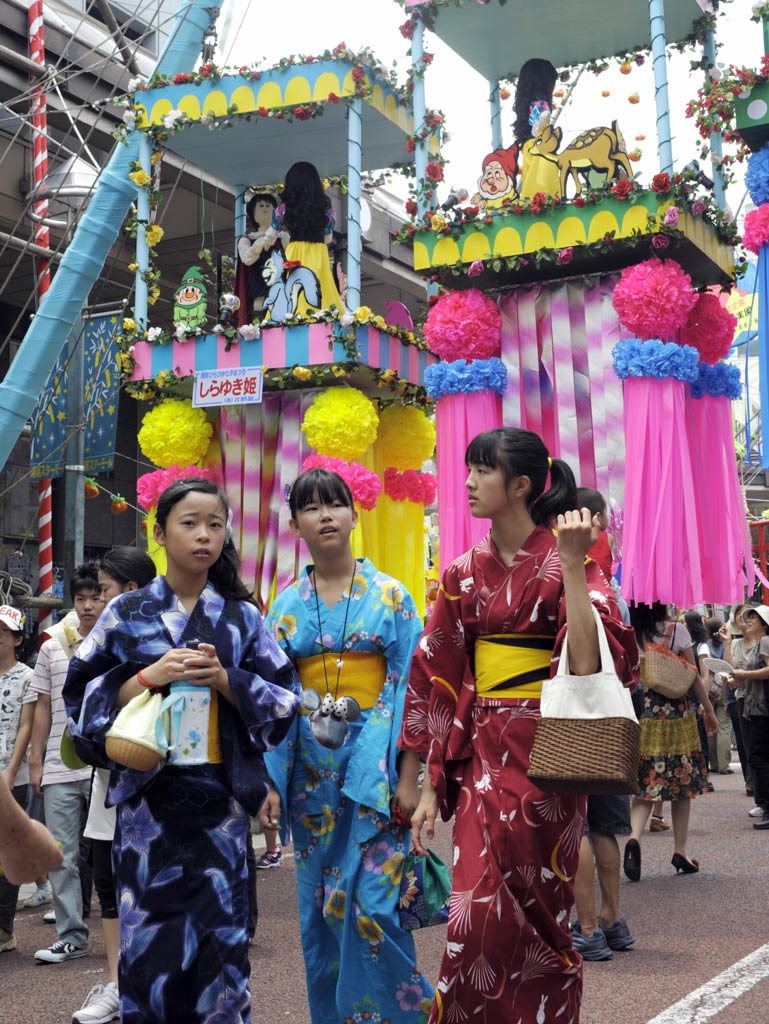Across A Bridge Of Dreams, By Lesley Downer
Japan's headlong rush towards modernity frames this tale of star-crossed love.

Nearly a thousand years before Romeo met Juliet, Japan boasted its own pair of star-crossed lovers: the Weaver Princess and the Cowherd. Their passion is still celebrated during the yearly festival of Tanabata, when legend tells that innumerable magpies form a bridge across the Milky Way to enable the princess and her swain to meet.
The lovers in this engrossing new novel from geisha expert and historian Lesley Downer face a division almost as insuperable. Taka is the daughter of Japan's most revered warlord and his geisha concubine; Nobu is her family's servant. Her father heads the Satsuma clan of the southern island of Kyushu (yes, where the citrus fruit come from), risen to power after a brutal civil war; he is an Aizu from the defeated North.
Regional rivalry is the backdrop for a tale of forbidden love. But though Downer has chosen a familiar device, it unfolds in a world unfamiliar to most Western readers, when 19th-century Japan underwent a brutal transition that took it from a feudal military society to a modern industrial power in the space of a single decade. That decade began in 1867 with the transfer of power from the shogun, Japan's military ruler, to the Emperor Meiji and a new political cadre.
Leading the imperial army was Takamori Saigo, the fabled "last samurai" and the model for Taka's father in Across A Bridge Of Dreams. But Saigo (whom Downer thinly veils as "General Kitaoka") became disenchanted with the pace of change, and staged a reluctant rebellion which ended at Shiroyama in September 1877. There was no further serious opposition to Japan's new order, though the "last samurai" is remembered with great affection.
Downer's story opens in 1873 with Taka and her mother, resplendent in newfangled Western dress, visiting a fashionable restaurant to sample beef. Taka finds the aroma of sizzling meat disgusting, but tells herself it is "the smell of the new age, of civilisation". There are subtle touches throughout. A group of samurai rush like a "divine wind" upon their enemies; the Japanese phrase is "kami kaze". The author isn't just being clever; she is hinting at how the Japanese history that we do know - the expansionism of the Second World War - is rooted in this transitional era, when Japan created an army and navy from scratch, using Western models but suffused with notions of samurai spirit.
The army, landing to confront Kitaoka/Saigo's rebels, disembarks from "a towering Mitsubishi troopship". Long before it manufactured cars, this Japanese conglomerate built ships, then aircraft, including the wartime Zero fighter planes.
Like the era she describes, Downer has united two contradictory themes: love and war. Fans of period romance should be sure to pack Across A Bridge Of Dreams this summer, but those who prize blood over love in historical fiction will also find much to enjoy.
Subscribe to Independent Premium to bookmark this article
Want to bookmark your favourite articles and stories to read or reference later? Start your Independent Premium subscription today.

Join our commenting forum
Join thought-provoking conversations, follow other Independent readers and see their replies